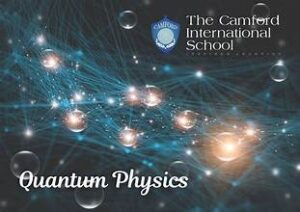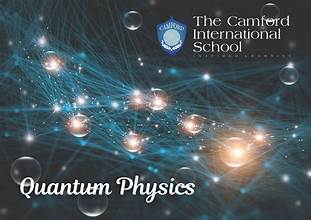
Quantum physics, often considered one of the most perplexing and fascinating fields of science, has a reputation for being both complex and mysterious. Yet, understanding its core principles can be incredibly rewarding. This comprehensive guide aims to demystify quantum physics for beginners, offering a clear and concise introduction to this intriguing branch of science.
What is Quantum Physics?
Quantum physics, also known as quantum mechanics, is the branch of physics that deals with the behavior of particles at the smallest scales—such as atoms and subatomic particles. Unlike classical physics, which governs the macroscopic world of everyday objects, quantum physics operates under different rules, often defying our intuitive understanding of reality.
The Basics of Quantum Mechanics
1. Wave-Particle Duality
One of the fundamental concepts in quantum physics is wave-particle duality. This principle states that particles, such as electrons and photons, exhibit both wave-like and particle-like properties. For example, light can be described as both a wave and a stream of particles called photons. This duality challenges classical notions of how particles should behave.
2. Quantization
Quantization refers to the idea that certain properties, like energy, can only take on discrete values. In classical physics, energy can vary continuously, but in quantum mechanics, it is quantized into specific levels. This principle is famously illustrated by the energy levels of electrons in an atom, which can only occupy certain discrete orbits around the nucleus.
3. Heisenberg Uncertainty Principle
The Heisenberg Uncertainty Principle states that it is impossible to simultaneously know both the exact position and momentum of a particle. This intrinsic uncertainty is not due to limitations in measurement but is a fundamental property of nature. The more accurately we measure one quantity, the less accurately we can measure the other.
4. Quantum Entanglement
Quantum entanglement is a phenomenon where particles become interconnected in such a way that the state of one particle instantly influences the state of another, regardless of the distance between them. This phenomenon perplexed even Einstein, who famously referred to it as “spooky action at a distance.” Entanglement plays a crucial role in quantum computing and quantum cryptography.
5. Superposition
Superposition is the principle that a quantum system can exist in multiple states simultaneously until it is measured. For example, an electron can be in a superposition of different energy levels or positions until an observation collapses it into one specific state. This concept is famously illustrated by Schrödinger’s cat thought experiment, where a cat in a sealed box is simultaneously alive and dead until observed.
Key Experiments That Shaped Quantum Physics
1. Double-Slit Experiment
The double-slit experiment demonstrates wave-particle duality. When particles like electrons are directed through two slits, they create an interference pattern on a screen, indicating wave-like behavior. However, if observed, they behave like particles, and the interference pattern disappears. This experiment highlights the impact of observation on quantum systems.
2. Photoelectric Effect
The photoelectric effect, explained by Albert Einstein, showed that light can eject electrons from a material when it hits a surface. This phenomenon cannot be explained by classical wave theory alone and was instrumental in the development of quantum theory, demonstrating that light has particle-like properties.
Applications of Quantum Physics
Quantum physics is not just a theoretical pursuit; it has practical applications that are transforming technology. Some notable applications include:
- Quantum Computing: Quantum computers use quantum bits (qubits) to perform complex calculations much faster than classical computers. They have the potential to revolutionize fields such as cryptography, optimization, and drug discovery.
- Quantum Cryptography: Quantum cryptography uses principles of quantum mechanics to create secure communication channels that are theoretically immune to eavesdropping.
- Quantum Sensors: These sensors leverage quantum properties to achieve extremely high precision in measurements, which can be used in various fields, including medical imaging and navigation.
Conclusion
Quantum physics opens a window into the fundamental workings of the universe, challenging our understanding and pushing the boundaries of what we know about reality. While the concepts may seem daunting at first, grasping the basics of quantum mechanics provides a foundation for appreciating its profound implications and applications. As science continues to explore the quantum realm, the potential for new discoveries and technologies remains boundless.




